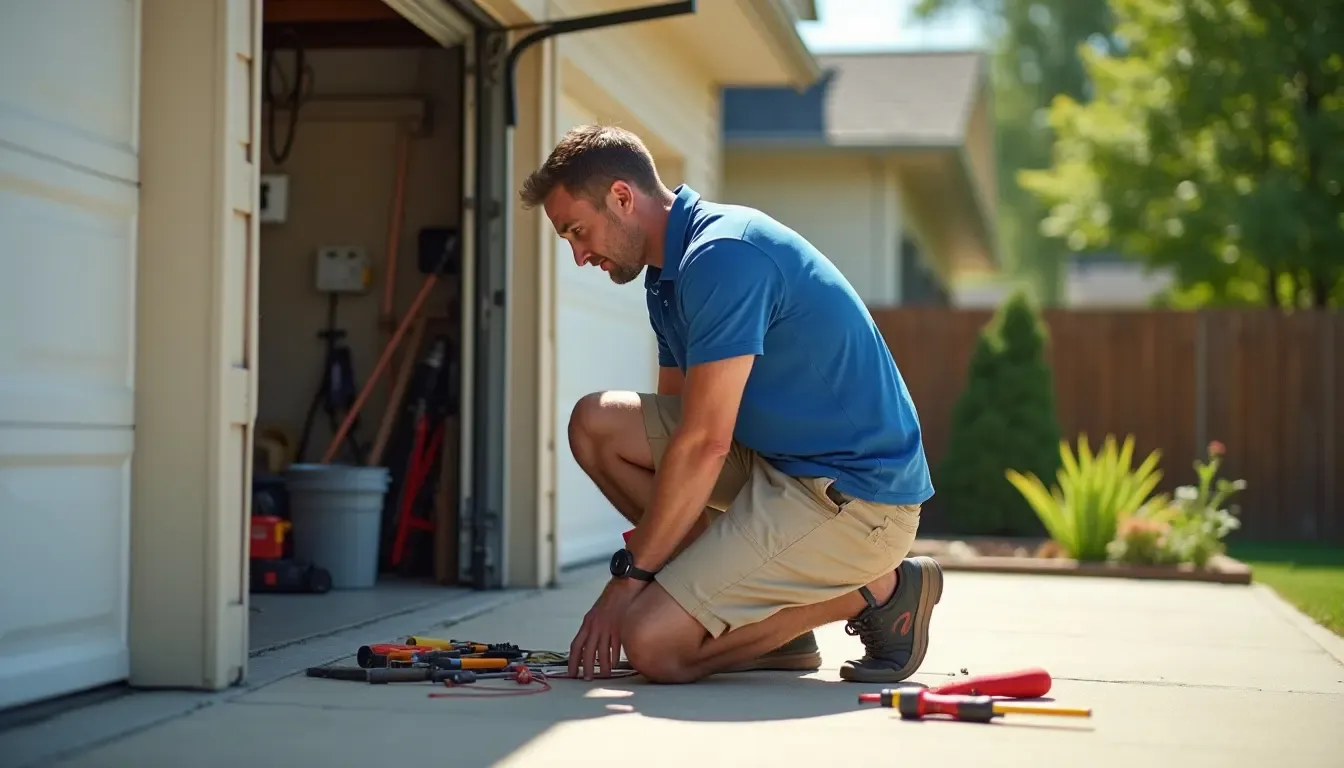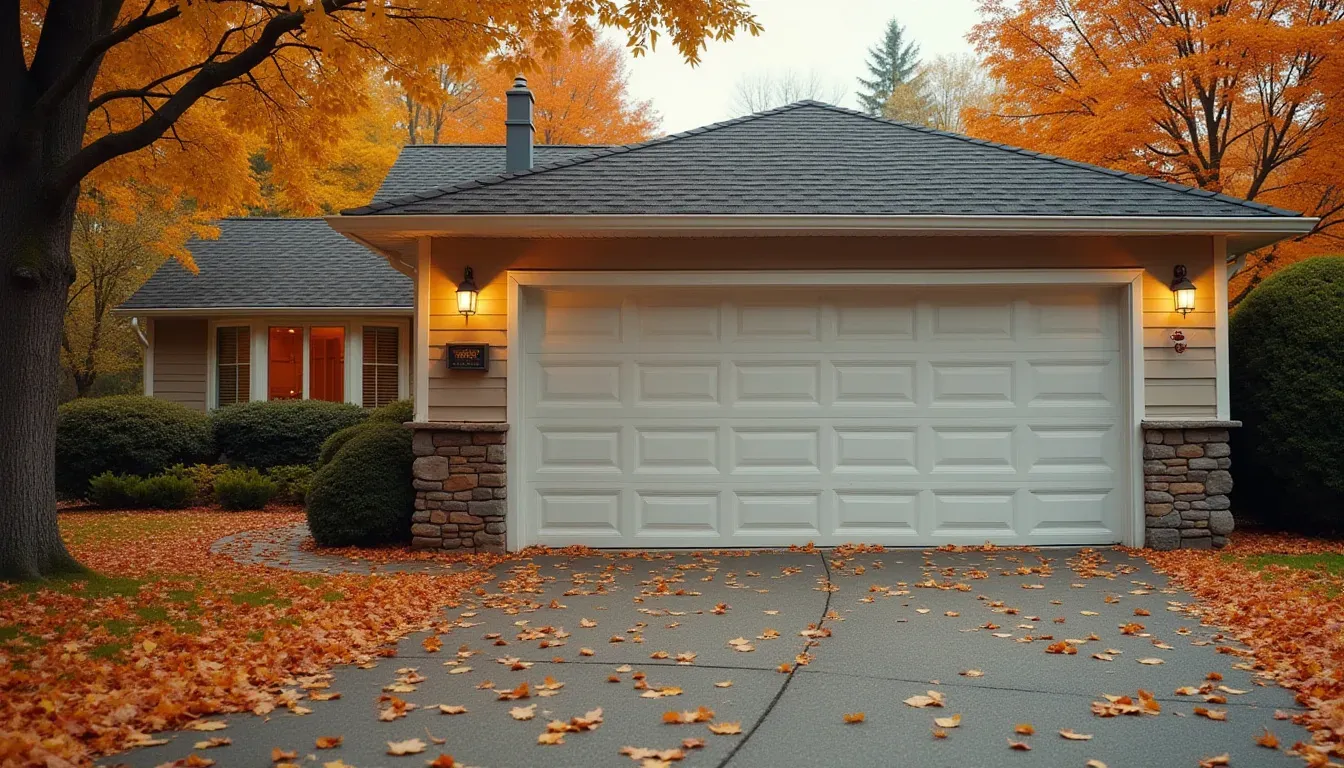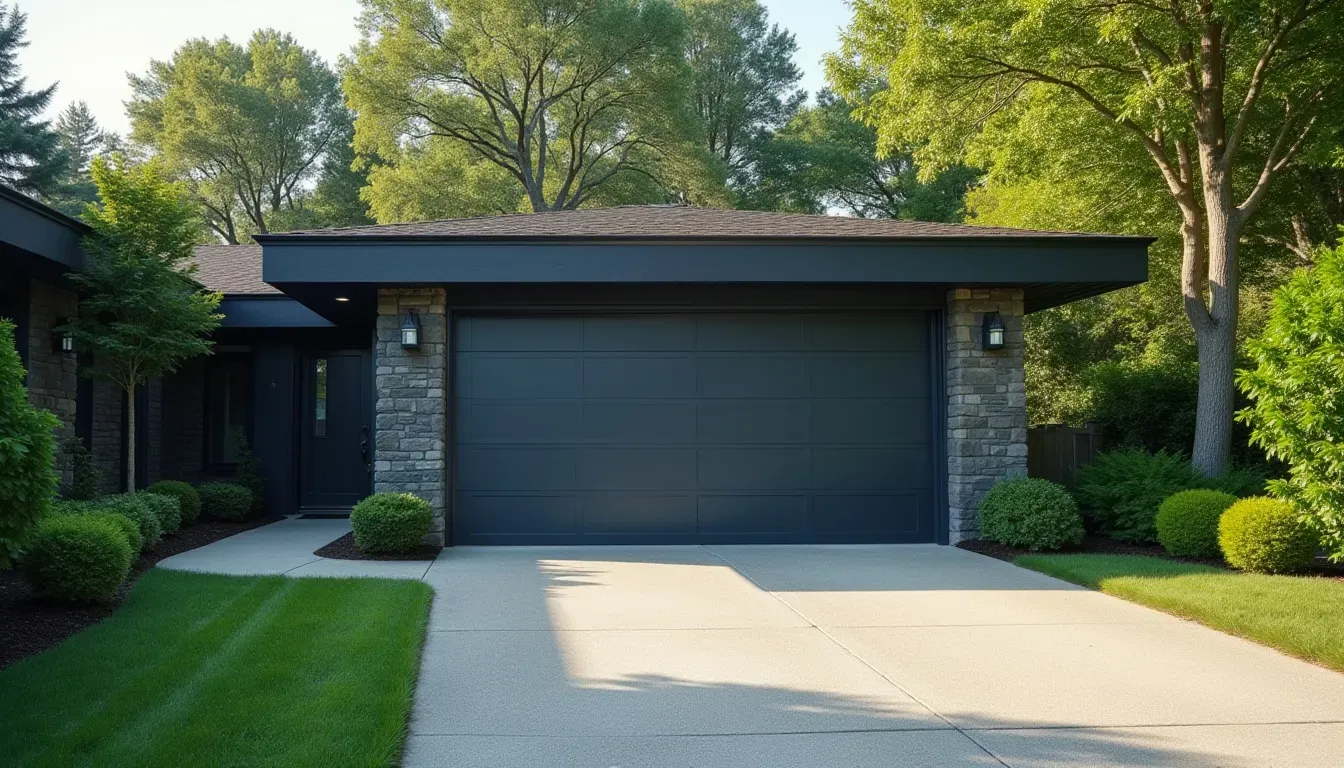Beginner’s Guide to Garage Door Alignment: A DIY Homeowner's Approach
Published: Feb 19, 2025
A garage door is more than just an entry point to your home. It’s a key part of daily convenience. It plays a crucial role in your home's security. However, when it’s not working right, it can disrupt your routine. One common issue is misalignment. Misalignment can occur for various reasons, even in a well-maintained door.
This guide will help you understand how to fix garage door alignment without feeling overwhelmed. It is based on our own experience and the feedback we get from our customers after they try to fix the issue on their own. Our garage door company is focused on providing professional garage door services that address the issue permanently, because we don’t believe in temporary solutions.
Why Proper Alignment Matters
When a door is properly aligned, it will operate smoothly and its components will last longer. Over time—often sooner than expected—unaddressed misalignment can cause wear and tear. This reduces efficiency and can lead to costly repairs. A door that doesn’t glide evenly along its tracks increases the strain on the motor and other parts significantly. This added stress can lead to premature failure of components like springs and rollers.
Moreover, an unaligned garage door isn’t only about convenience as it can seriously compromise safety. A misaligned door may not close fully or could reverse unexpectedly, posing risks to children, pets, or vehicles.
Finally, misalignment often leads to higher energy bills. If your door doesn’t seal properly, drafts and temperature fluctuations can make heating or cooling your garage more expensive. This is especially important for residents in cold or hot areas where they need to use the heating or cooling all year around.
Taking the time to address alignment issues can save you from headaches, expenses, and potential accidents down the road. If you use professional garage door services for this task, the time you spend on resolving the issue will be minimal. However, if you’re willing to invest time, but save the money, the DIY approach is your best option. With this guide on how to fix garage door alignment created by professionals from Up & Down Garage Doors you can address the issues efficiently and get all the information you need in one place.
Signs Your Garage Door Needs Alignment
Your door's movement reveals much about its condition. If you’re attentive enough, you can see upcoming issues way before they become hazardous. So, among all the potential problems, how to identify misalignment?

Does your garage door wobble or jerk while moving? This uneven motion is a clear sign that it’s out of alignment. The tracks may not be level, or the rollers could be wearing out. Over time, this movement can escalate into more serious problems, like bent tracks or frayed cables. Regularly check your door to catch these issues before they worsen.
Grinding or screeching sounds are another red flag to pay attention to. They are frequently brought on by strained parts that are having trouble operating correctly. These sounds could be caused by loose hardware, debris in the tracks, or worn-out rollers.
It's critical to treat these sounds as soon as possible because ignoring them can result in more serious mechanical issues.

Understanding the Basics of Garage Doors
A typical garage door system includes tracks, rollers, springs, and sensors. Each part is equally important for smooth operation. The tracks guide the door up and down, the rollers allow it to glide smoothly, and the springs balance its weight. When even one link in this process breaks, your garage door wouldn’t function properly. Additionally, it will make the parts that still perform optimally break over time. It is much easier to identify potential problems when something goes wrong out of the blue when you understand the purpose of each component.
The sensors are small but essential. Their main job is to detect obstacles and prevent accidents. These sensors are positioned close to the bottom of the rails, and if something disrupts them, they send out an invisible beam that tells the door to halt. Your garage may remain open if your garage door won't close due to misaligned sensors.
Also, there is a garage door emergency release cord, which is a crucial safety feature that allows you to manually operate the door during power outages or mechanical failures.
When garage door sensors malfunction, knowing how to fix garage door sensor alignment can save you a great deal of trouble. With a few tweaks and routine cleaning to keep them clear of dirt and debris, sensor problems are frequently easily resolved.
Tools You’ll Need for DIY Alignment

Having the right tools on hand makes the process much more manageable. Additionally, you may know how to fix garage door alignment in detail, but without proper equipment it won’t be possible. Fortunately, most households already have these tools, or they can be borrowed.
So, here’s a list of the necessary tools you’ll need:
- sturdy level to check the tracks
- screwdriver or wrench to adjust bolts
- tape measure for precise measurements
For more advanced fixes, a rubber mallet or a pair of locking pliers might come in handy.

Safety Gear Checklist
Safety should always be your priority when working on garage door repair. It’s important to know that you can stop at any moment if you feel unsure about the further actions and call for professional help to avoid risks of injury.
Here’s a list of safety equipment needed to guarantee the whole process will be completed safely:
- gloves to protect your hands from sharp edges
- safety goggles to shield your eyes from dust or debris
- hard hat is optional but recommended, especially if you’re working beneath the garage door
Wearing non-slip footwear can also help keep you steady on your feet, reducing the risk of accidents. Avoid wearing flip-flops, as they do not provide adequate support. Taking these precautions can make your DIY project safer and more efficient.
How to Fix Garage Door Alignment

Fixing the alignment of your garage door may seem intimidating, but breaking it down into steps makes it manageable.
- First, examine the tracks for bends or gaps. If you spot any, use a rubber mallet to gently straighten them out.
- Next, check the rollers and clean any debris that might be obstructing their movement. If the rollers are damaged, replacing them can improve the door’s motion.
- Using a level, ensure the tracks are perfectly aligned, tightening any loose bolts as necessary.
- Finally, test the door by opening and closing it a few times to confirm smooth operation.
Just like this, garage door alignment can be fixed. However, this course of action sometimes can’t be applicable if the issue is more complex. In this case, professional garage door services are your best option to return the door to its optimal condition without making the situation worse or injuring yourself.

Common Mistakes to Avoid when Fixing Garage Door Alignment
Rushing through the procedure frequently results in the omission of small things that could later cause issues. For example, overtightening bolts might worsen the condition by distorting the tracks. Ignoring lubrication is another error; a small amount of grease goes a long way toward making sure parts move smoothly. It might be risky when homeowners neglect to turn off the electricity before beginning repairs.
Finally, trying to repair significant damage without the right equipment or expertise can increase the cost of fixing the issue later. To prevent needless setbacks, take your time and carefully go through each stage, or go for professional services right away to skip a part where you’re needlessly wasting your time trying to fix the door on your own.
Summing Up
Garage door misalignment issues might pose a significant risk to your safety and security. A garage door is heavy and can cause significant damage or injury if it falls. That’s why it’s so important to diagnose your door from time to time (the best time is before the winter and after) to ensure there’s no upcoming issue that might ruin your routine and add one more thing to your to-do list.
In case, you decide to fix your door on your own, use our guide and safety equipment to run the process smoothly. However, you always can call us at Up & Down Garage Doors and get professional services for your garage door. We’re always ready to give you a helping hand when it comes to garage door issues of any kind.


